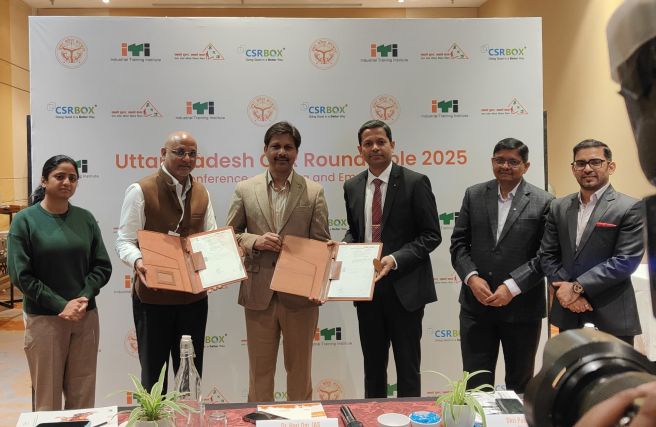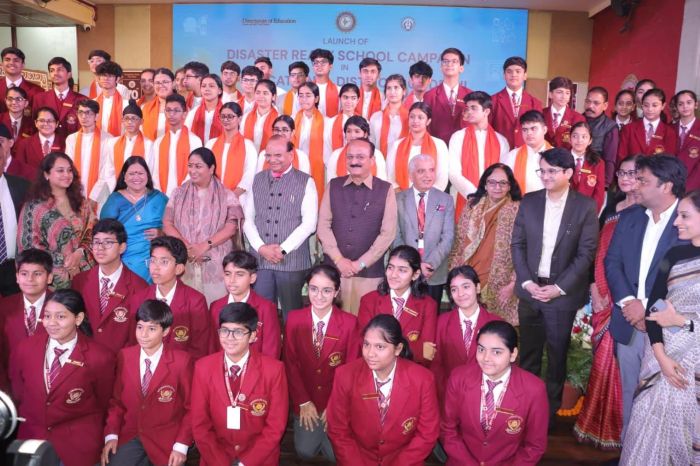
Citing a decade of evidence linking rising childhood obesity and associated health risks, including diabetes, to excessive sugar consumption, the Central Board of Secondary Education (CBSE), on the recommendation of the National Commission for Protection of Child Rights (NCPCR)—a statutory body under the Union Ministry of Women and Child Development—on May 16 directed its 30,700 affiliated schools to establish ‘Sugar Boards’ to promote health literacy about the harmful effects of high sugar intake.
And on June 10, Council for the Indian School Certificate Examinations (CISCE), followed suit as this national board also asked its affiliated schools to set up “visual information displays” aimed at educating students about the risk of excessive sugar intake.
According to recent studies, sugar accounts for approximately 13% of the daily calorie intake for children aged 4 to 10 and 15% for those aged 11 to 18 — far exceeding the World Health Organization’s recommended cap of 5%. The proliferation of sugar snacks, beverages and processed foods, often easily available in school environments contributes significantly to this excessive intake. Therefore, NCPCR in its recent consultative meetings with various stakeholders thought of outreach to children and their families through this school initiative.
In a circular dated May 16, the CBSE wrote: “Establish ‘Sugar boards’ where information is displayed for educating the students about the risks of excessive sugar intake. These boards should provide essential information, including the recommended daily intake, the sugar content in commonly consumed food foods (unhealthy meals such as junk food, cold drinks, etc), health risks associated with high sugar consumption, and health dietary alternatives. This will educate students about informed choices and promote long-term health benefits among students.” The schools have been also asked to organize seminars and work hops in this regard and by July 15 submit a brief report along with photographs of these activities on https://shorturl.at/E3kKc.
With this bold initiative against sugar, CBSE aims to make schools a front line of defense against lifestyle diseases by fostering healthier eating habits early in life. Educators across the board feel it will pave the way for a healthier, more aware, and empowered student community in India’s schools. This move is more than regulation — it’s a welcome step.
Prime Minister Narendra Modi, during the 122nd edition of Mann Ki Baat, his monthly radio program, lauded the CBSE’s initiative, calling it a step toward a “Fit India.” “Children have started choosing healthy options themselves,” he said, reflecting on the power of awareness in transforming dietary behavior.
Educators have also embraced the move. Rita Kapur, Director of Gyanshree School in Noida, shared how her institution already disallows junk food and cold drinks, opting instead to provide cooked satvik (plain & less spicy) meals. “From our own experience, I advise schools to consider in-house meal preparation as a viable vertical. I’ll not recommend cloud kitchen food or outside cooked food. It not only ensures nutritional control but also supports the spirit of this initiative,” she said.
The urgency behind the initiative is underscored by troubling data. According to the Diabetes Research and Clinical Practice journal (August 2023), 15.35% of Indian schoolchildren are in a pre-diabetic state, and nearly 1% already have diabetes — a disease once rare in the young.
A March 2024 study in The Lancet painted an even grimmer picture: India had 12.5 million overweight children aged 5–19 in 2022. The obesity rate in boys increased from 0.1% in 1990 to 3.9% in 2022, and for girls, it rose from 0.1% to 3.1%. This mirrors a global trend in which the dual burden of malnutrition — undernutrition and obesity — is on the rise.
Beyond diabetes, excessive sugar is linked with dental caries, hormonal imbalances, headaches, and even changes in brain function. Neuroscientific studies indicate that sugar stimulates the brain’s reward center similarly to addictive substances, creating compulsive behavior that reinforces sugar cravings.
Health professionals have welcomed the CBSE directive but urge it to be implemented meaningfully. Dr. Deepmala Lalchandani, President of IMA Dwarka and Deputy Medical Superintendent at Shri Dada Dev Matri Avum Shishu Chikitsalya, remarked, “This is a huge step. But these efforts must go beyond tokenism. Sensitizing children to food labelling, nutritional profiling, and calorie calculations is critical if the message is to stay with them for life.”
She also called for other school boards and state education departments to adopt similar measures, turning this into a national health movement
With the Sugar Boards initiative, CBSE aims to transform schools into bastions of preventive healthcare and by instilling mindful eating habits early on, the board hopes to reduce the incidence of non-communicable diseases and nurture a generation of informed, health-conscious citizens.
As India grapples with the health implications of its growing youth population, this initiative marks a critical first step — one that may soon ripple beyond the classrooms and into homes, communities, and the broader public health landscape. Remember, the challenge is to sensitize all young people and families on unhealthy food that stands for junk food, ultra-processed food, nutritionally inappropriate foods, caffeinated/coloured or carbonated foods/beverages and sugar sweetened beverages. Therefore, schools should take this activity seriously and maximize its engagement.








